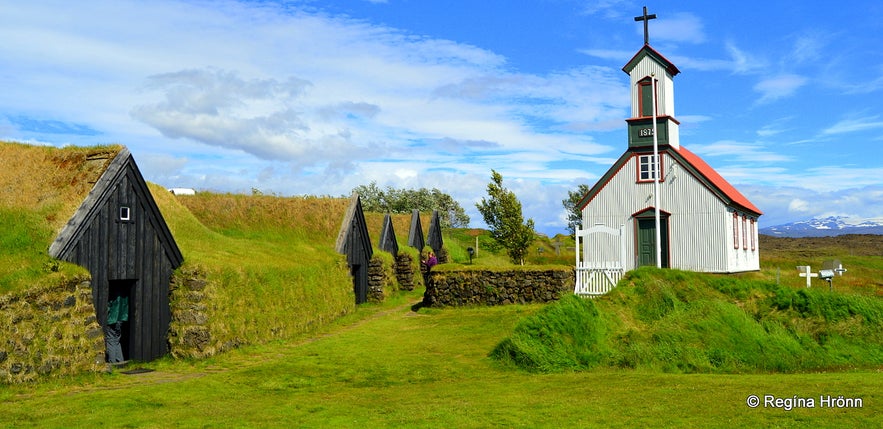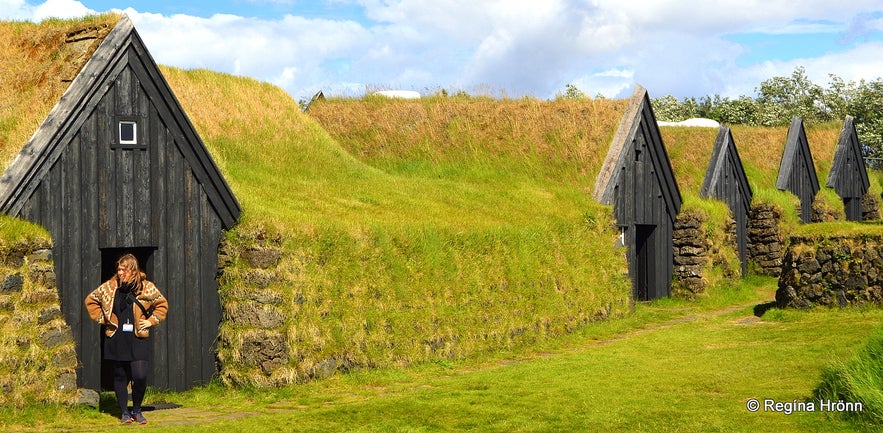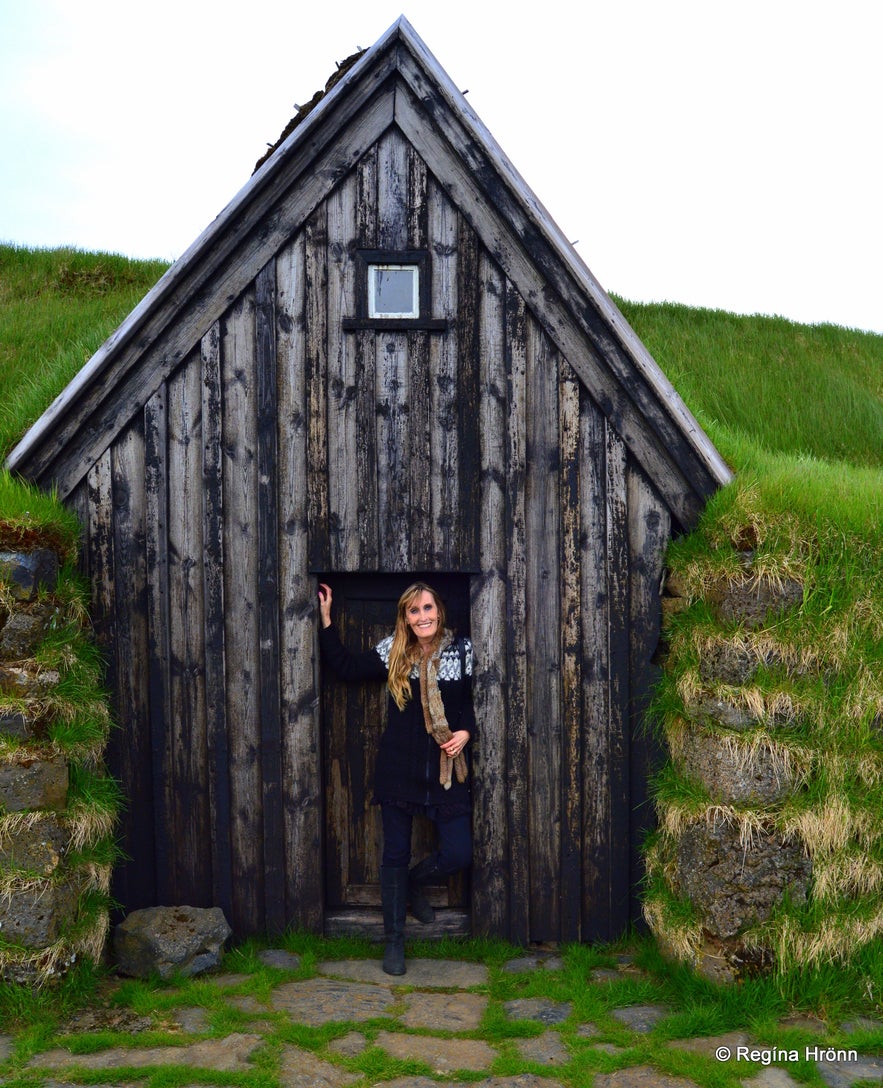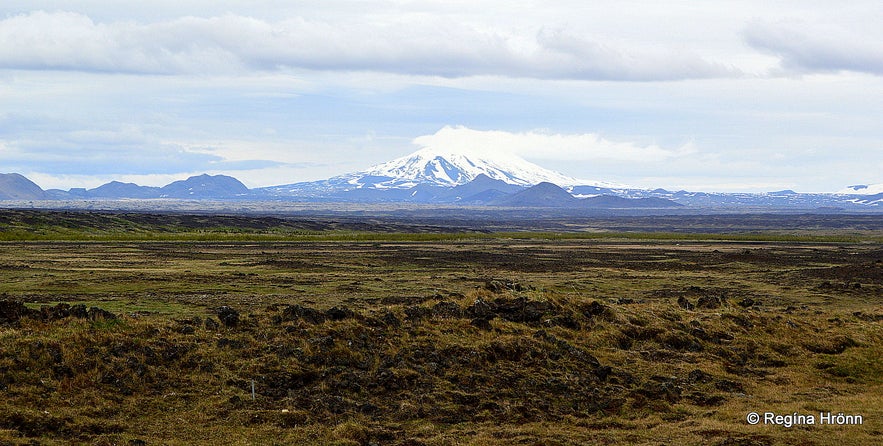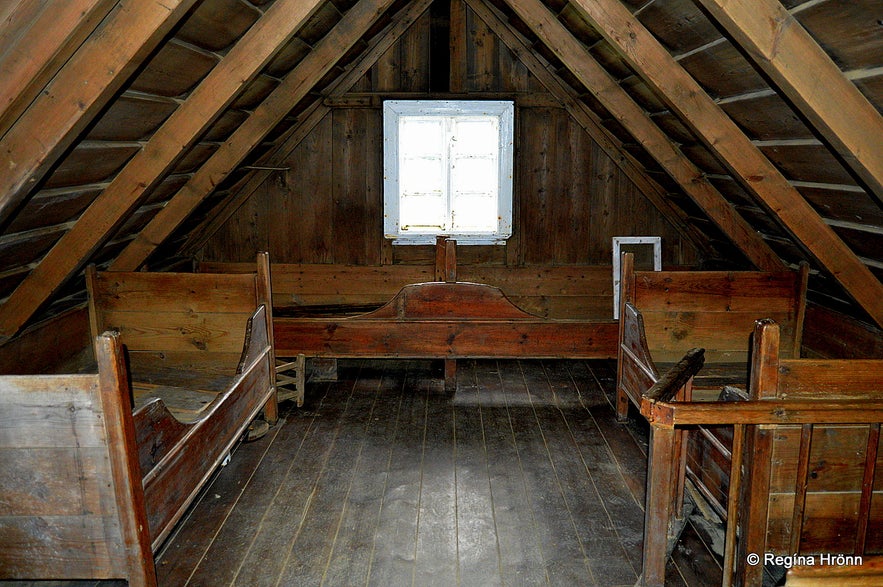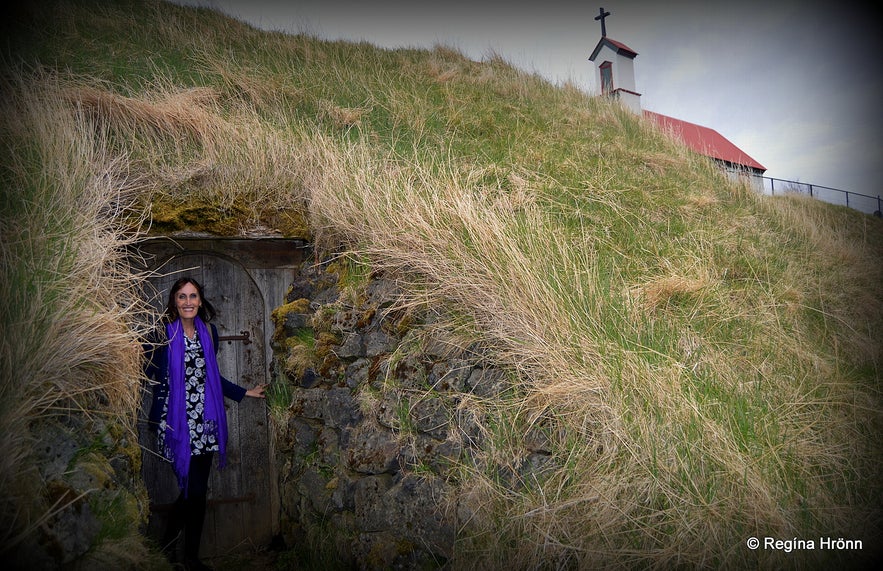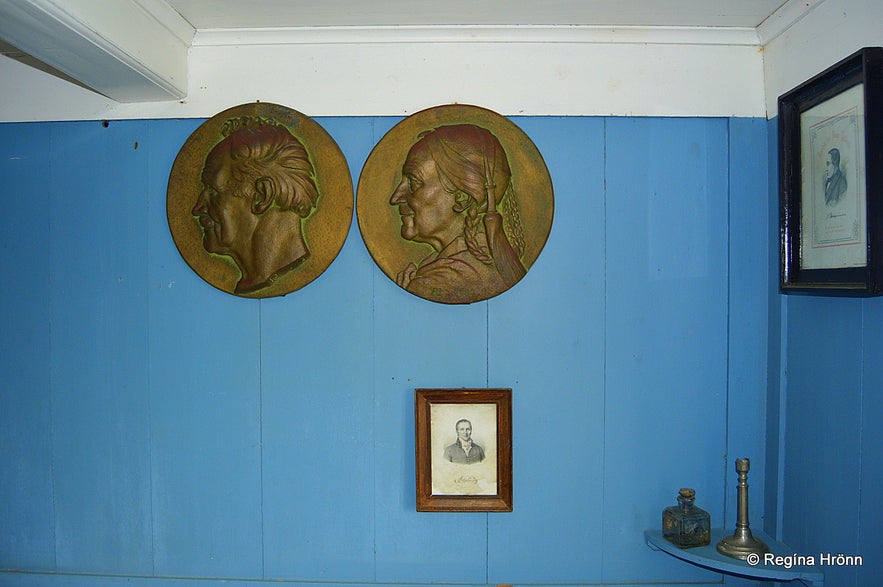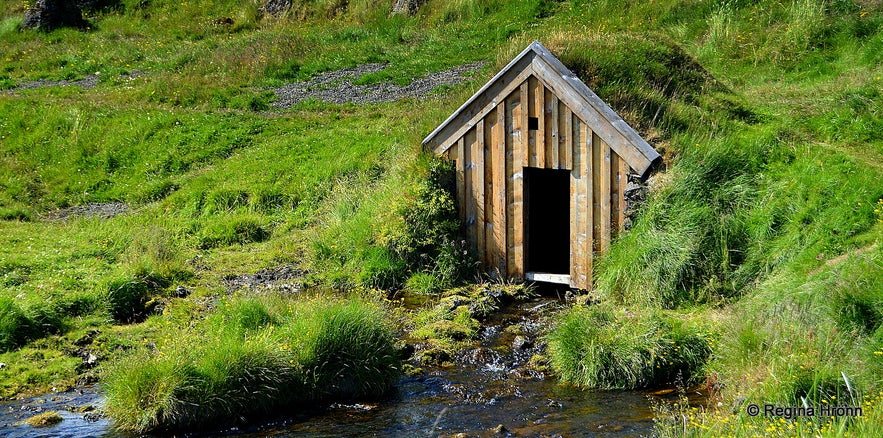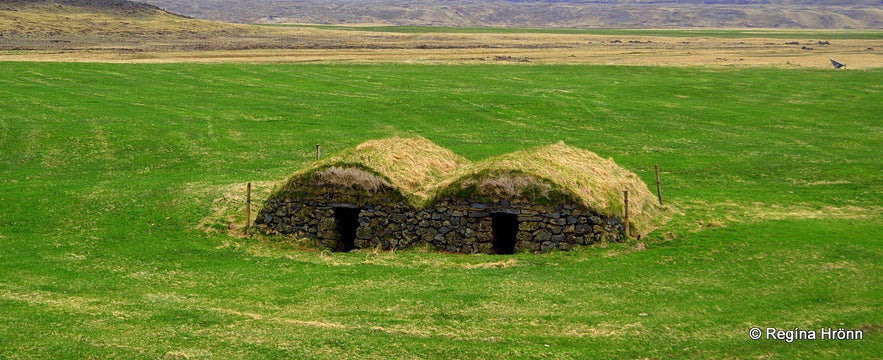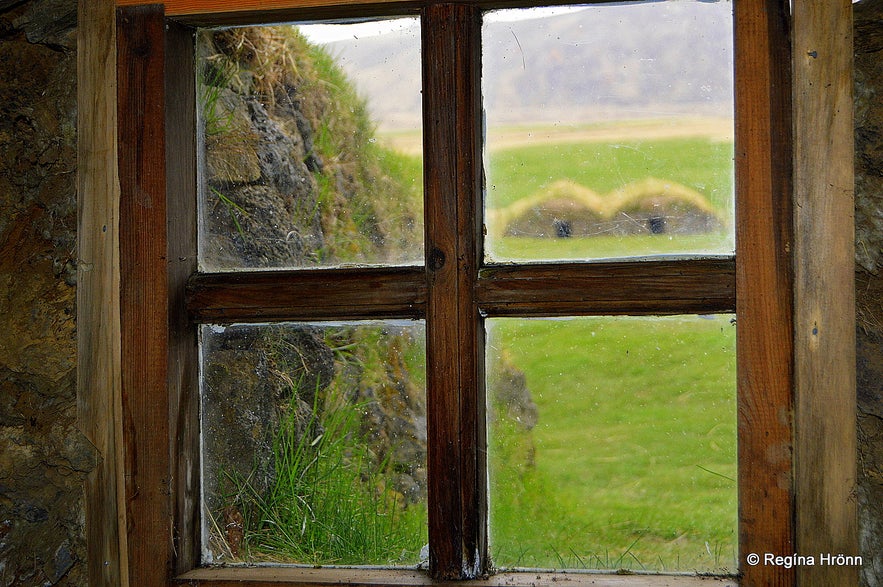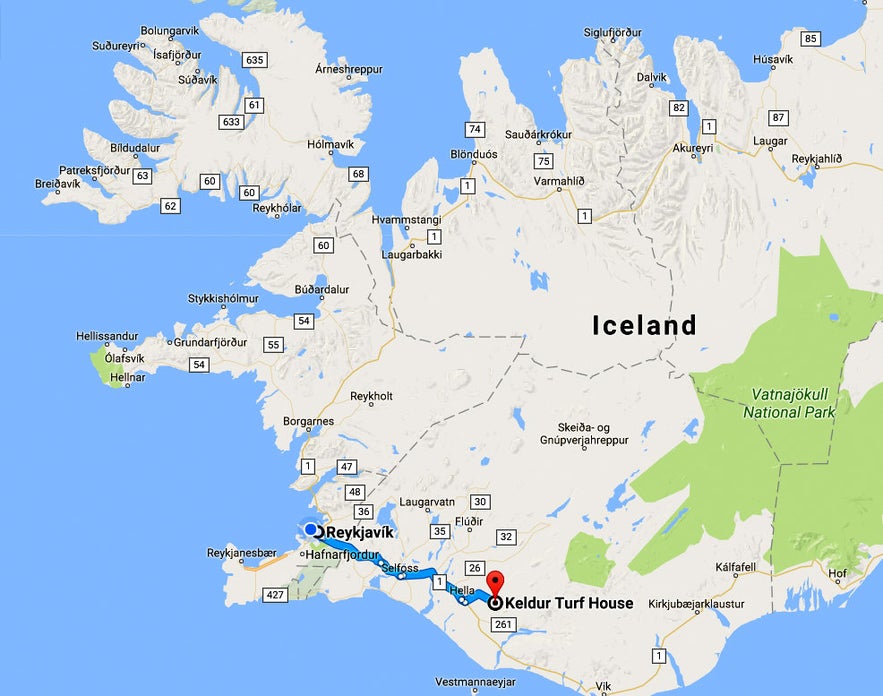
Keldur Turf House in South Iceland - is this the oldest House in Iceland?
I adore turf houses, also called sod houses, they are so typical Icelandic. So I think it is proper to write about the oldest turf house in Iceland, the historical farm of Keldur in South Iceland.
Keldur is one of only very few preserved turf houses in South Iceland, the other ones are f.ex. the turf house at Austur-Meðalholt, which is now a museum, and at Skógar museum you will find a lovely collection of turf houses.
Keldur turf-farm and an employee from the National Museum
I have written travel-blogs on all of the remaining turf houses in Iceland, f.ex. Laufás turf house, Þverá turf house, and Grenjaðarstaður, all of which are located in North Iceland.
Keldur farm is a historical place and here lived one of the characters in the Saga of Njáll, Ingjaldur Höskuldsson, who lived at Keldur from 974 until around the year 1000.
In the 12th and 13th centuries Keldur was one of the manors of one of the most powerful clans in Iceland, the Oddi clan, and Jón Loftsson (1124-1197), who was their chieftain, lived at Keldur until his death in 1197.
Keldur turf-farm
Jón Loftsson was one of the most powerful chieftains in Iceland in the 12th century. He also lived at the manor Oddi, which is nearby.
Jón apparently built a convent at Keldur in 1193, but it wasn't long-lived and was torn down 30 years later.
At the farm of Keldur, you will find the oldest surviving turf buildings of this kind in Iceland. The front buildings are parallel to the farmyard, which is a design that has been used at Keldur since the middle ages. The hall (skáli) of the turf houses is believed to be the oldest turf house hall in Iceland.

Keldnaskrínið
I saw this exquisite artifact at Þjóðminjasafn Íslands - Iceland's National Museum. It is called Keldnaskrínið from the Keldnakirkja church and is on loan from the National Museum of Denmark.
It is believed to date back to the first part of the 13th century and that it was made in Iceland.
The turf houses at Keldur have been rebuilt many times. The present turf houses were rebuilt after big earthquakes shook the houses in 1896 and 1912.
The ruins of 16-18 farmsteads have been found at Keldur.
Mt. Hekla volcano
Close to Keldur is the well-known volcano Mt. Hekla, which erupts pretty frequently, and from Keldur is a beautiful view of the volcano (see my photo above).
My relative, Drífa, who lives at Keldur, posts a photo of Mt. Hekla every day on her Facebook page, and I love seeing how different the volcano looks from day to day.
Mt. Hekla can often be seen with this strange-looking cloud on her top, which makes her look like she is wearing a cap with a tassel.
Lava rocks from Hekla's eruptions were used for building the farmstead at Keldur. And driftwood was also used as a building material.
Inside Keldur turf-farm
The other buildings at Keldur, apart from the farm are f.ex. a smithy, a cattle shed, a stable, store-houses, a stockyard, and a smithy.
At Keldur you will find the oldest remaining structure in Iceland. An underpass was found in 1932 by coincidence when the residents were digging for a septic tank.
The underpass is believed to date back to the 11th-13th century, at the time of the Viking Sturlungaöld age.
The old underpass
The 25 meters long underpass leads from the farm to the creek and is believed to have been an escape passage during the Sturlungaöld age wars. It might also have been used to hold down the fort.
The daughter of Sighvatur Sturluson, Steinvör Sighvatsdóttir, lived at Keldur with her husband Hálfdan Sæmundsson, who was the grandson of the aforementioned Jón Loftsson.
See also my travel-blog on the Viking battles during the Age of the Sturlungs:
The Bloody Viking Battles in Skagafjörður, North-Iceland
Inside Keldur turf-farm
My mother's cousin lives in Keldur, and her late husband's ancestors lived in Keldur. His grandfather was the last person to live in the old turf farm, or until 1946. My mother's cousin allowed us to have a look inside the old turf farm at Keldur and the church.
Additions were made to the turf farm in 1800, a baðstofa - sitting room, which was rebuilt in 1891.
Since people are no longer living in the turf-houses, they get cold and damp. So a drying system is needed to keep them dry in the wintertime, but in the summertime, many of them are open to visitors.
Inside Keldur turf-farm
The National Museum of Iceland bought the old turf farm in 1942, and the farmhouse is part of the National Museum Historic Buildings Collection. I plan on showing you all of the old houses in Iceland, which belong to this collection.
I just recently wrote this travel-blog about all the turf houses in Iceland, which is a start, but there are several stone buildings as well in the collection, which I will show you in another travel-blog.
Also, have a look at what UNESCO has to say about Keldur turf houses and all of the remaining turf houses in Iceland for that matter.
The drying system in full swing inside Keldur turf-farm
It is possible to drive almost the whole way down to the turf houses at Keldur. By the information sign, you will find a car park - leave your car there so as not to disturb the farmers, and walk for a short distance to the old farmhouses.
You will encounter a sign in Icelandic saying: "Bílastæði - Gestir sem koma til að skoða bæinn á Keldum eru beðnir að skilja bíla eftir hér á stæðinu og ganga heim að bænum. - Þjóðminjavörður" - want me to translate ;) "Parking - Visitors, who come to see the farm at Keldur, are asked to leave their car here in this car park and walk to the farm".
The mill-house
First, you will arrive at a cute little turf structure - it is a 120-year-old mill house, which runs by hydroelectric power in Króktúnslækur creek. There are hundreds of springs at Keldur and the name, Keldur, stems from all these springs.
The clear spring water creates the two creeks, Króktúnslækur and Keldnalækur creeks, which in turn run into the river Eystri-Rangá. I have seen the water described as the clearest and coldest in Iceland.
Below you will see the old lamb houses (lambhús) at Framtún at Keldur. Most likely the first farm building at Keldur stood in this place and a big (30 m) "skáli", an old farm from the Viking age, lies beneath them, it might even be the skáli of Ingjaldur Höskuldsson, erected before the year 1000.
Lamb-houses at Keldur
The turf house is open to visitors in the summer months from the 1st of June until the 31st of August. There is an entrance fee for adults (ISK 1,500 last time I knew), but free entrance for children under 18 years old.
In other seasons you can have a look at the turf-house and take some photos from the outside.
But be very respectful and don't visit other buildings at the adjacent farm Keldur, which is the home of the farmers.
My relative at Keldur, Drífa, has told me that some visitors have even opened and entered the farm's barn, which is strictly forbidden due to obvious reasons. So let's always be respectful and keep a low profile when visiting the turf farm at Keldur.
Looking out from the window of Keldur turf-farm
Keldur is located in South Iceland, between the villages of Hella and Hvolsvöllur, and is well worth the detour from the ring-road 1.
After passing the village Hella, continue on ring-road 1, then turn onto road 264. Part of road 264 is gravel, but it is suitable for 2WD cars. From Hella, the distance it’s 19 km.
Here is the location of Keldur on the map. GPS: 63°49'17.9"N 20°04'25.4"W
Vestmannaeyjar islands are also close to here, so why not pop over to visit the volcanic islands which erupted in 1973.
Other travel-blogs I have written about turf houses in Iceland are if you are interested in seeing what they look like:
Have a lovely time at Keldur :)
Читать другие блоги
Загадка отеля Radisson 1919
Из истории славного города Рейкьявика Каждый умный человек знает, что свастика, как древний положительный символ движения, благоденствия, солнцеворота, не имеет ничего общего с преступным нацистскимЧитать далееАвтобусы в Рейкьявике и Исландии
Привет, ребята Сейчас очень быстро, без лирических отступлений, расскажу вам об общественном транспорте Рейкьявика - автобусах Stræto. Эти знания вам очень пригодятся, если, приехав в Рейкьявик, выЧитать далееКак Исландия вдохновила легендарных рокеров
Рассказ о том, как песня об Исландии стала классикой рока. Я очень люблю музыку. А музыка - это одна из причин, почему я люблю Исландию. Но история эта не про исландскую группу, а про легенд рок-нЧитать далее

Загрузите приложение крупнейшего туристического портала Исландии на свой телефон, чтобы управлять всей поездкой в одном месте.
Отсканируйте этот QR-код с помощью камеры телефона и нажмите на появившуюся ссылку, чтобы всегда иметь доступ к крупнейшему туристическому порталу Исландии в своем кармане. Введите свой номер телефона или адрес электронной почты, чтобы получить SMS или электронное письмо со ссылкой на скачивание.

